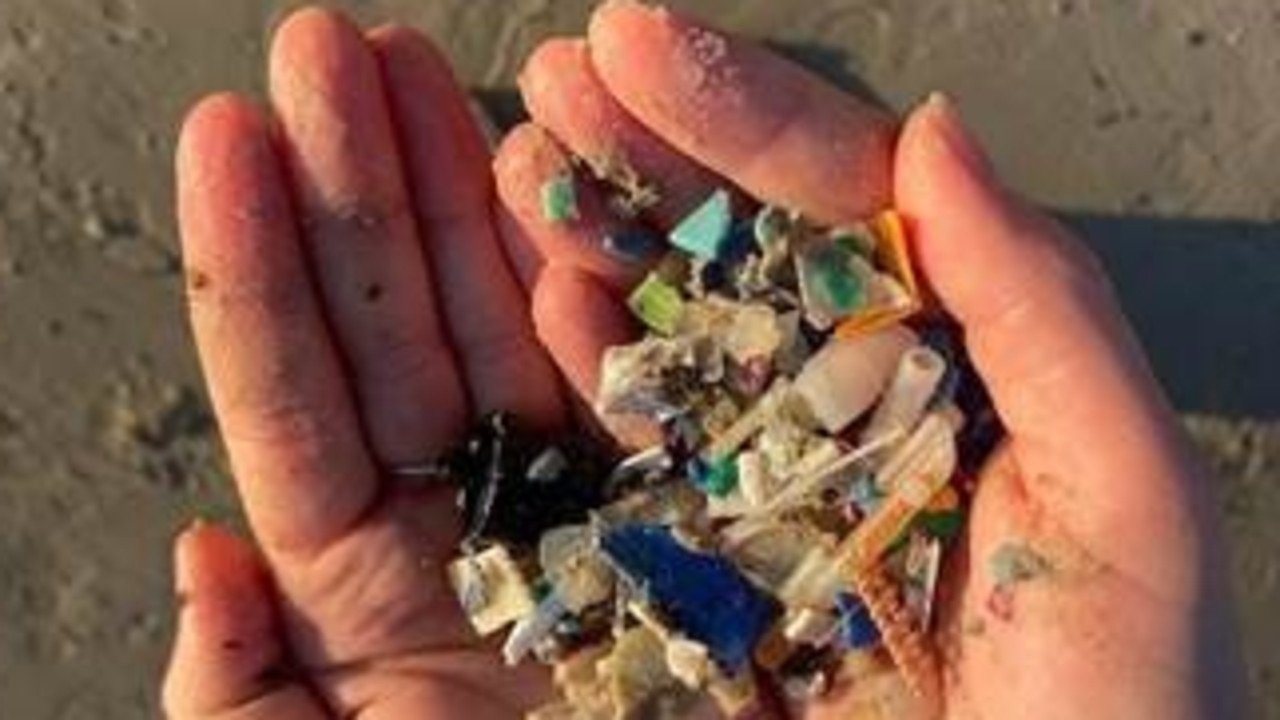Magnetic powder could help clean microplastics from Earth’s oceans
Australian scientists have announced a breakthrough in the effort to rid the world’s oceans of microplastics with a fast, cheap and sustainable magnetic material that can pull particles to its surface

READING LEVEL: GREEN
A magnetic material that mops up microplastics in water could be a breakthrough in cleaning up the planet’s contaminated* seas.
Created by scientists at Melbourne’s RMIT, the adsorbent* material, in powder form, attracts microplastics* to its surface.
Lead researcher Professor Nicky Eshtiaghi said current methods of removing microplastics from water often took days. But her team’s latest invention was cheap, sustainable* and achieved better results in just one hour.

“This is a big win for the environment and the circular economy*,” Prof Eshtiaghi said.
Microplastics are considered one of the world’s biggest environmental concerns, with the fine particles* detected in oceans, rivers and drinking supplies.
“The nano-pillar* structure we’ve engineered to remove this pollution, which is impossible to see but very harmful to the environment, is recycled from waste and can be used multiple times,” said Prof Eshtiaghi, from RMIT’s School of Environmental and Chemical Engineering.
The study results have been published in the Chemical Engineering Journal.

The team will now look to engage with industry to further develop the innovation*.
Fellow researcher Dr Nasir Mahmood said the material attracted microplastics without creating secondary pollutants*.
“The adsorbent is prepared with special surface properties so that it can effectively and simultaneously remove both microplastics and dissolved pollutants from water,” he said.
“Microplastics smaller than 5mm, which can take up to 450 years to degrade, are not detectable and removable through conventional treatment systems, resulting in millions of tonnes being released into the sea every year.
“This is not only harmful for aquatic life, but also has significant negative impacts on human health.”
GLOSSARY
- contaminated: to make something less pure or make it poisonous
- adsorbent: solid substance used to collect another substance from a liquid or gas.
- microplastics: small plastic pieces less than 5mm long, harmful to aquatic and human life
- sustainable: able to continue over time without harming the environment
- circular economy: model of making and using that involves sharing, leasing, reusing, repairing, refurbishing and recycling
- particles: tiny specks of matter, extremely small pieces of something like dust or dirt
- nano-pillar: nanotechnology involves very small pieces of atoms being combined and changed and nanopillars refer to the shape of nanostructures when grouped like arrays
- innovation: new idea or method or the use of new ideas and methods
- pollutants: chemical or biological substance that harms water, air, or land quality
EXTRA READING
Plastic waste found in seafood
Our paradise islands polluted with plastic
Aussie floating rubbish bin cleans up oceans
QUICK QUIZ
- The adsorbent material comes in what form?
- Where have microplastics been detected?
- Current methods for removing microplastics from water take how long?
- How many years does it take microplastics to break down?
- How many tonnes of microplastics are released into the sea each year?
LISTEN TO THIS STORY
CLASSROOM ACTIVITIES
1. Be persuasive!
How do you think the RMIT team could convince companies, or industry, to help them develop the project? Write a list of points and facts that you think could persuade companies to help turn the team’s idea into reality?
Time: allow 25 minutes to complete this activity
Curriculum Links: English; Science
2. Extension
Use the information in the story to create a diagram. The purpose of your diagram is to help a younger kid understand how the magnetic mop ocean cleaner works.
Time: allow 45 minutes to complete this activity
Curriculum Links: English; Science; Visual Communication Design
VCOP ACTIVITY
To sum it up
After reading the article, use your comprehension skills to summarise in a maximum of three sentences what the article is about.
Think about:
What is the main topic or idea?
What is an important or interesting fact?
Who was involved (people or places)?
Use your VCOP skills to re-read your summary to make sure it is clear, specific and well punctuated.


